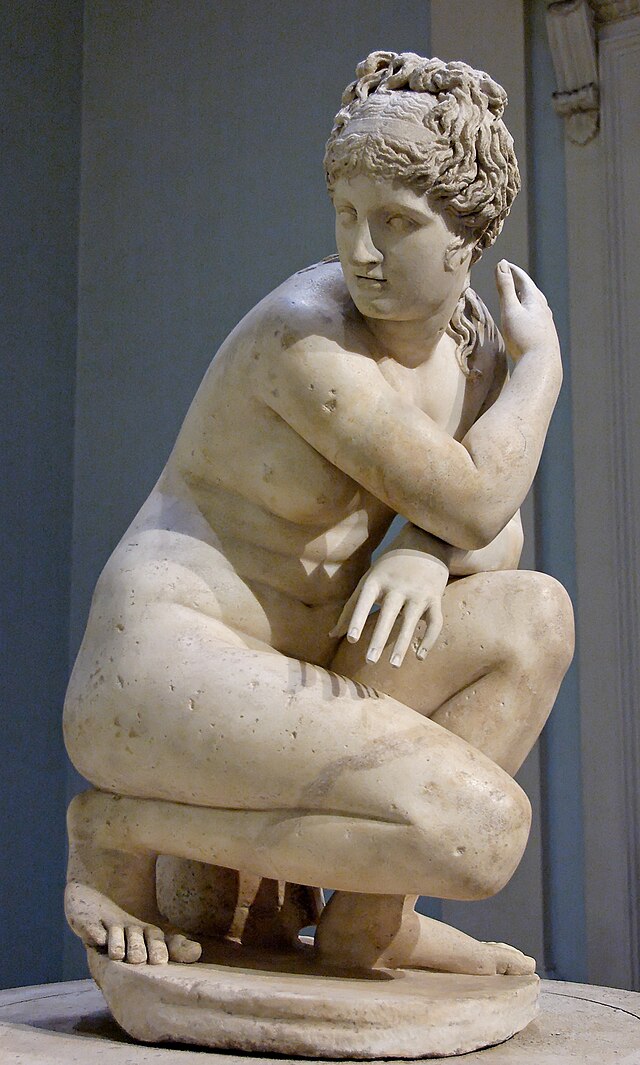Top Qs
Timeline
Chat
Perspective
Lely Venus
Marble statue of the crouching Venus From Wikipedia, the free encyclopedia
Remove ads
The Lely Venus is a marble statue of the crouching Venus type. It is a copy of a Hellenistic original by Doidalses of Bithynia and dates from the Antonine period.

History
Summarize
Perspective
The statue is first recorded in the Gonzaga collection in Mantua, where it was inventoried in 1627[1] Whilst there it was seen by Peter Paul Rubens, who stayed with the Gonzaga family whilst on the continent on diplomatic and art-collecting duties for Charles I of England. It was an important influence on his voluptuous style of painting the female nude, so much so that it appeared at the National Gallery's "Rubens: A Master in the Making" exhibition from 26 October 2005 to 15 January 2006 [2]

It was soon purchased from the Gonzagas, in 1627–28, for King Charles I of England,[3] It was remarked in England in 1631 as "the finest statue of all" and valued at 6000 ecus.[4] On the dispersal of Charles's art collections during the Commonwealth, it came into the possession of the painter and connoisseur Sir Peter Lely, from whom it derives its name.[5] Two years after Lely's death (1682), it was re-acquired from his heirs for the Royal Collection. The statue was stolen from the Palace of Whitehall after it was destroyed by fire on January 4, 1698, and was recovered four years later by the Crown.[6][7]
Since 2005 it has been on long-term loan to the British Museum, following treatment by their conservators, and is currently on display in gallery 23.[8]
Remove ads
Notes
Wikiwand - on
Seamless Wikipedia browsing. On steroids.
Remove ads
